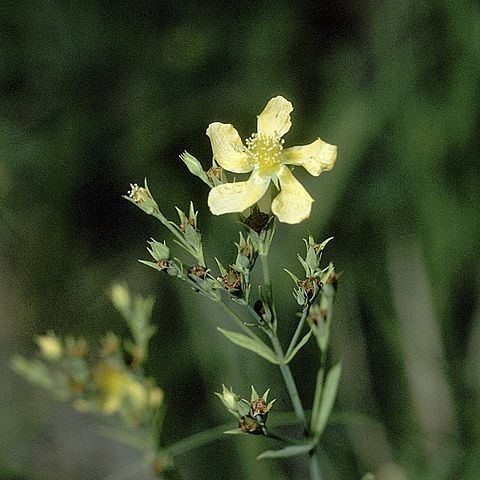Herbs perennial, erect, branching at <usually aerenchymatous> base and in inflorescence, 2–7 dm. Stems: internodes 4-lined. Leaves (main stem) spreading to appressed, sessile; blade usually broadly to narrowly ovate, rarely elliptic or lanceolate, 4–20 × 5–15(–18) mm, <mostly shorter than internodes>, leathery, margins plane, apex acute to subrounded, <densely gland-dotted>, basal veins 1–5, if 1, midrib with 2–3 pairs of branches. Inflorescences broadly pyramidal to corymbiform, to 25-flowered, branching mostly dichasial. Flowers 5–13 mm diam.; sepals ovate or lanceolate to elliptic or obovate, subequal, 3–8 × 1.5–4 mm, <margins sometimes ciliate, not setulose-ciliate>, apex acute; petals orange-yellow, obovate, 5–10 mm; stamens 50–80, irregularly grouped; styles 2–4 mm; stigmas clavate. Capsules ovoid to rostrate-subglobose, 3–5 × 2–3 mm. Seeds 0.4–0.7 mm; testa obscurely linear-reticulate to finely ribbed-scalariform.

